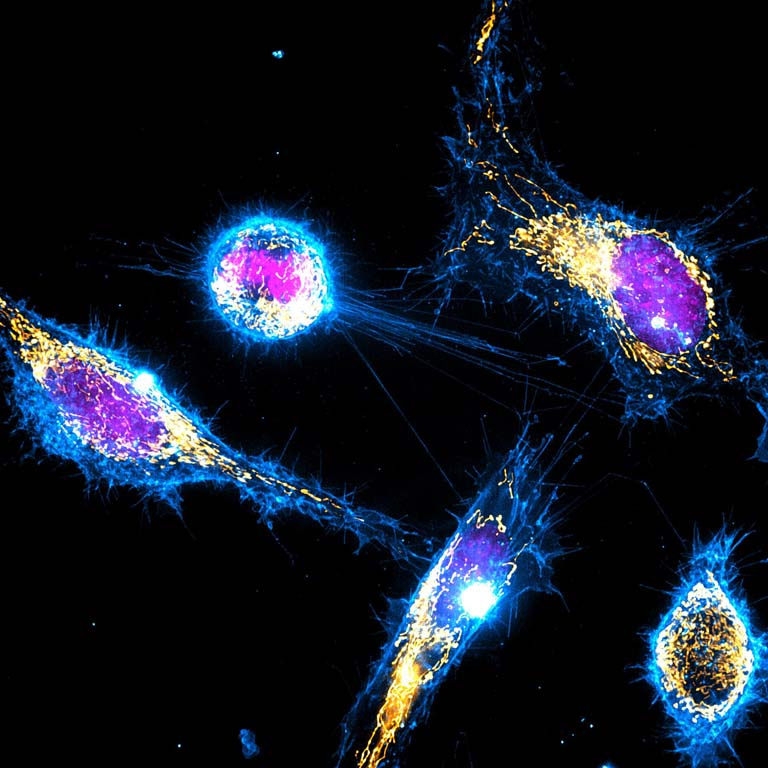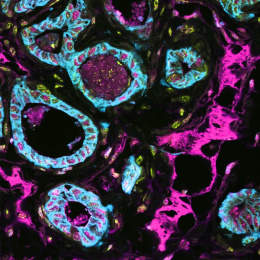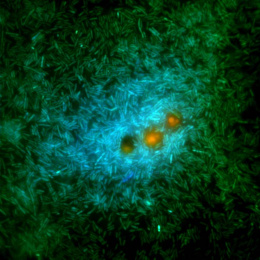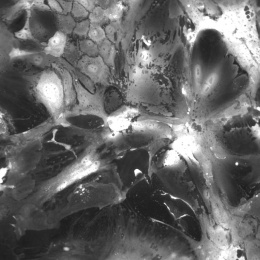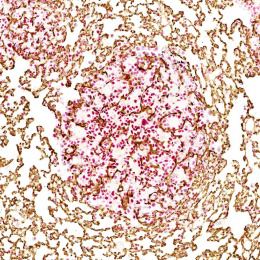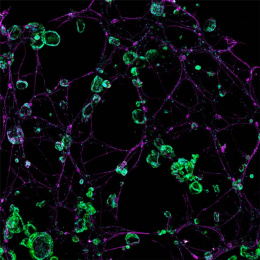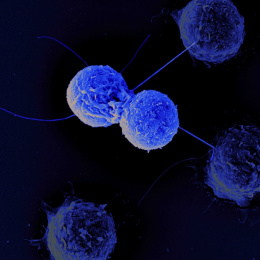A Metabolic Drive for Cell Division 1
A Metabolic Drive for Cell Division 1
Teemu P. Miettinen, Kiera M. Sapp, Scott R. Manalis, Matthew G. Vander Heiden
Koch Institute at MIT
When a cell divides, it undergoes a widespread internal reorganization and eventually separates into two daughter cells. Sometimes this process fails to produce two desired daughter cells, and instead results in too many or too few daughter cells or incorrect partitioning of cellular components between the daughter cells. This can alter the behavior and contents of the daughter cells, in worst cases resulting in mutations and cancer. Knowledge about how a cell divides and how the process of cell division can fail will help us understand cancer initiation and progression. Eventually this knowledge will support the discovery of cancer specific vulnerabilities that may enable novel cancer treatments.
Work in the Koch Institute and the MIT Center for Precision Cancer Medicine, led by researchers in the Vander Heiden and Manalis labs, has revealed that cells are in a metabolically different state during cell division. The image displays live human adenocarcinoma cells, some of which are in the process of cell division, where the cell rounds up prior to the separation of the daughter cells. Mitochondria, shown in yellow, are key metabolic organelles that display altered metabolism during cell division. By discovering how these metabolic changes are regulated, the researchers aim to understand how the division of the cell’s DNA, shown in magenta, and the rest of the cell, shown in blue, is regulated.
